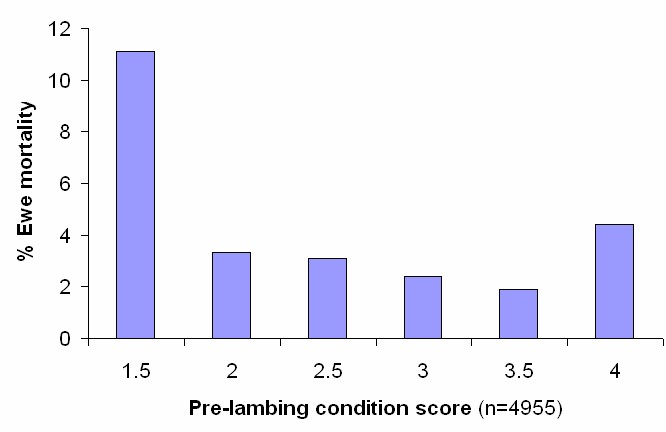|

Ewe condition score (CS) at
lambing can be important in
limiting ewe mortality,
especially when weather
conditions are poor.
Mortality occurs mainly when
condition score is less than
2 during late pregnancy.
Twin bearing ewes are more
at risk during late
pregnancy and lambing.
Single bearing ewes may have
increased risk of dystocia
if they are too heavy coming
into lambing.
Ewes are also affected by
weather, their age,
pregnancy status and FOO at
lambing.

source: GSARI
2001-2004 lambing data
Recommendations
-
Single
ewes should be at
least CS 2.5 by
lambing and should
be < 4 CS to
limit dystocia
-
Where
poor weather is
likely over lambing,
shelter must be
provided and
effective predator
control is
important.
-
Older
ewes (full mouth and
older) should have
higher FOO @ lambing
to ensure adequate
intake.
Danger Zone
Twin ewes < CS 2.5 @
lambing,
Single ewes
<CS 2 or >CS 4 @
lambing
Options:
- Identify twinners (with
option to run separately
in late pregnancy) and
remove dries @ scanning
(d 90)
- Draft off any twinners
< CS 2.5 @ day 90 and
manage separately to
increase Condition
Score
- Draft off any single
ewes < CS 2 @ day 90
and manage separately to
increase Condition
Score
- Prepare lambing paddocks
- especially twinner mob
by:
o Controlling
predation
o Providing
shelter
o Good
quality and supply of
pasture
- Any ewes <CS 2 should
be removed from the mob
and managed separately
Back to
Top
|